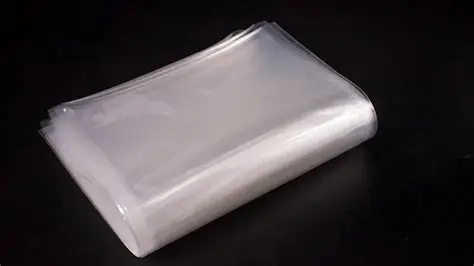1. In terms of performance, frozen vacuum bags are designed to extend the storage life and shelf life of frozen foods through the use of refrigeration. Quick-freeze vacuum bags, on the other hand, are used to preserve the freshness of foods during rapid freezing.

2. In terms of application, frozen vacuum bags are typically used for fresh meat, meat products, and seafood. At the same time, quick-freeze vacuum bags have a broader scope, suitable not only for fresh meat, meat products, and seafood but also for packaging a variety of items, including noodles, fruits, and even vegetables.
3. In terms of packaging material selection, freezer vacuum bags only require cold-resistant and waterproof film. Quick-freeze vacuum bags, however, require film that not only resists cold and water but also possesses barrier properties.

The most common materials for vacuum bags include PE, RCPP, PET, PA, AL, PVA, and others. Let's first examine bags primarily made of PE material. These bags are highly suitable as low-temperature vacuum bags and are widely used in packaging frozen seafood. When fresh seafood is placed in a PE vacuum bag, it effectively blocks external air, preserving the seafood's fresh taste and quality. However, due to its properties, this material is unsuitable for products requiring heating, as deformation may occur.
RCPP-based bags are the preferred choice for high-temperature retort pouches. When foods undergo retort processing, these bags withstand extreme heat without deformation, ensuring safety and hygiene during processing. Whether for delicious retort-cooked dishes or foods requiring high-temperature sterilization, RCPP vacuum bags deliver unique advantages. RCPP is often combined with other materials to enhance overall bag performance. For instance, laminating with PET or AL materials improves barrier properties and heat resistance, ensuring food safety and hygiene during high-temperature processing.

Bags primarily made of PET excel at increasing mechanical strength. They are commonly used for packaging moisture-sensitive, powdered, puffed, and dried goods. For moisture-sensitive foods prone to spoilage, PET vacuum bags act as a robust protective shell, effectively blocking moisture intrusion to preserve taste and quality. Common laminations with PE or AL create multi-layer structures that boost both bag strength and barrier properties.
PA-based bags are renowned for their exceptional physical strength and puncture resistance. Many everyday items like toothbrushes, wooden combs, and fruit packaging bags are made from this material. It effectively shields products from external damage while providing excellent display appeal.

PA material can be laminated with other materials to meet specific requirements. For instance, combining it with PE increases flexibility, while pairing with AL enhances barrier properties, offering comprehensive protection. AL-based bags, commonly known as aluminum foil materials, offer high light-blocking, light-shielding, and moisture-proof properties. Acting like a super guardian, they provide all-around protection for the contents inside. Whether for light-sensitive foods or items requiring strict moisture control, aluminum foil vacuum bags deliver the most reliable assurance.

Finally, bags are primarily made of PVA material. This new eco-friendly material is soft, offers excellent transparency, and effectively enhances barrier properties with its high-barrier coating. It not only provides superior protection for products but also aligns with modern consumers' pursuit of environmental sustainability. It's important to note that during the lamination process, special techniques must be employed to ensure a strong bond between the PVA material and other materials.
